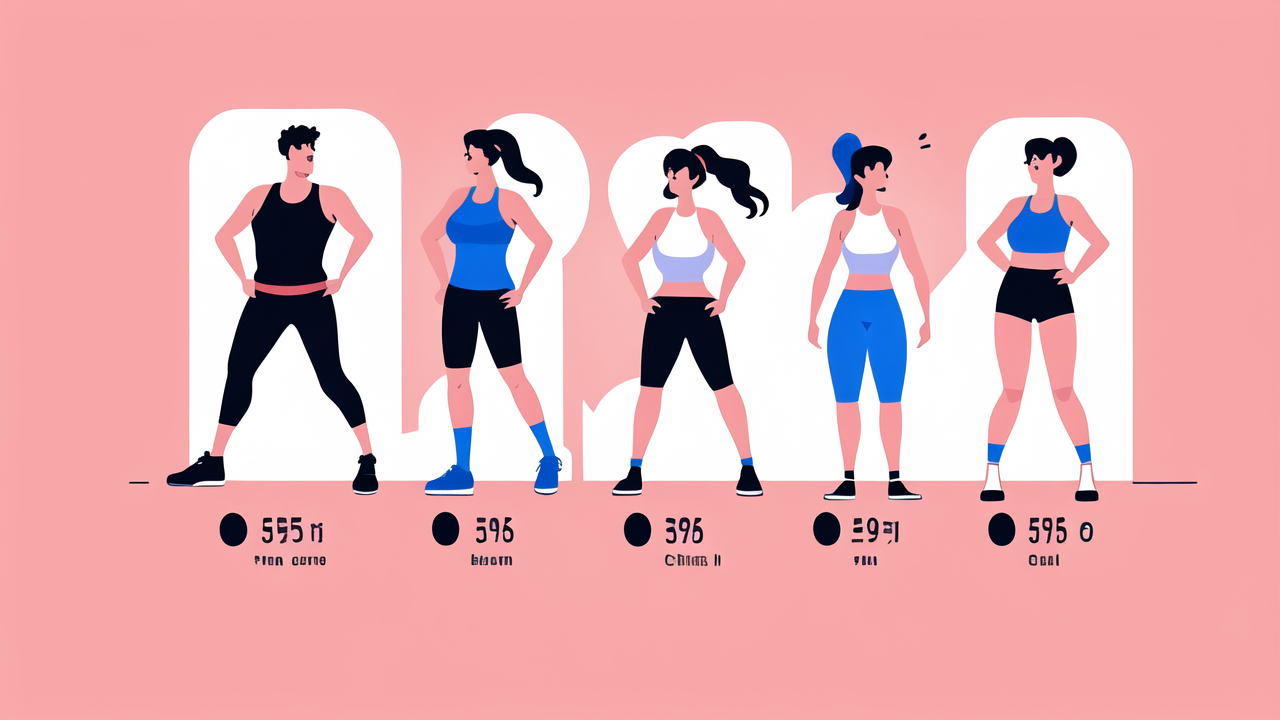The Evolution of Fitness Wearables: From Pulse Watches to Smart Fabrics
The inception of fitness wearables: The pulse watch's legacy
The pulse watch marked the beginning of fitness wearables. It first appeared in the 1980s. These devices were simple. They measured heart rate during exercise. Runners and athletes loved them. They could track their workout intensity. The early models were bulky. They had chest straps for accurate readings. Over time, they became more compact. Wrist-based sensors improved. This made pulse watches more user-friendly. They paved the way for modern fitness trackers. The legacy of pulse watches is still felt today. They showed the value of real-time health data. This concept is now central to all fitness wearables.

Advancements in smart fabric technology
Smart fabrics have revolutionized fitness wearables. These high-tech textiles can sense and react. They integrate sensors directly into clothing. This makes tracking more comfortable and accurate. Smart fabrics can measure heart rate, breathing, and movement. Some can even monitor sweat composition. They're washable and durable. This solves many issues of traditional wearables. Companies are exploring new applications. Examples include posture correction and muscle fatigue detection. Smart fabrics are becoming more affordable. This is making them accessible to more consumers. The technology is still evolving. We can expect even more impressive features in the future.
Future trends in fitness-centric wearables
The future of fitness wearables is exciting. We're moving towards more integrated solutions. Devices will become smaller and more powerful. They'll track more health metrics. AI will play a bigger role in data analysis. This will provide personalized health insights. Augmented reality may enhance workout experiences. Wearables might project exercise guides onto surfaces. Battery life will improve significantly. This will allow for continuous tracking. We may see wearables that harvest energy from body heat or movement. Privacy and data security will be key focus areas. As devices collect more data, protecting user information is crucial. The line between medical and consumer devices may blur. This could lead to wearables that can detect health issues early.
Understanding the Fitness Wearable Market in the United States
The demographics of fitness-centric watch users
Fitness watch users in the US are diverse. The largest group is adults aged 25-44. They're often health-conscious professionals. Many are millennials who grew up with technology. Younger users, 18-24, are also a growing segment. They're drawn to the latest features and designs. Older adults, 45-64, are increasingly adopting these devices. They use them to monitor health conditions. Gender-wise, it's fairly balanced. However, women slightly outnumber men as users. Income levels vary, but most users are middle to upper-middle class. Urban dwellers are more likely to own fitness watches. But the gap with suburban areas is narrowing. Fitness enthusiasts are early adopters. However, casual users are now the fastest-growing segment.

Market analysis: A look at the pulse watch segment
The pulse watch segment remains strong. It's a subset of the broader fitness wearable market. Basic pulse watches are popular among budget-conscious consumers. They offer essential features at lower prices. High-end pulse watches compete with smartwatches. They focus on accuracy and specialized fitness features. The market is seeing steady growth. This is driven by increased health awareness. Pulse watches are often entry-level devices. They introduce users to fitness tracking. Many consumers later upgrade to more advanced wearables. Competition is fierce in this segment. Established brands face challenges from new entrants. Chinese manufacturers are offering competitive products. This is putting pressure on prices. Despite this, innovation continues. New models offer improved accuracy and battery life.
The rise of smart fabric fitness solutions
Smart fabric solutions are gaining traction. They offer a new approach to fitness tracking. Major sportswear brands are investing heavily. They're integrating sensors into clothing and shoes. This market is still in its early stages. But it's growing rapidly. Smart fabrics appeal to those who find watches uncomfortable. They're popular in team sports and professional athletics. The technology is becoming more affordable. This is driving adoption among everyday consumers. Smart fabrics offer unique benefits. They can provide more comprehensive body monitoring. Some can even adjust to the wearer's body temperature. Privacy concerns are a challenge for this segment. Users worry about data collection through clothing. However, the potential for health insights is driving acceptance. As the technology improves, we'll likely see more smart fabric products.
Expert Strategies for Navigating the Fitness Wearable Industry
Evaluating key features in fitness wearables
When evaluating fitness wearables, consider these key features:

- Accuracy: Ensure the device provides reliable data.
- Battery life: Longer battery life means less frequent charging.
- Water resistance: Important for swimmers and durability.
- Comfort: The device should be comfortable for all-day wear.
- App integration: Look for compatibility with popular fitness apps.
- Display: Clear, easy-to-read screens are crucial.
- GPS: Built-in GPS is valuable for outdoor activities.
- Heart rate monitoring: Continuous monitoring offers better insights.
- Sleep tracking: This feature helps improve overall health.
- User interface: It should be intuitive and easy to navigate.
Prioritize features based on your fitness goals. Some may need advanced running metrics. Others might focus on general health tracking. Consider future needs too. A device that can grow with you is a good investment.
The importance of brand and technology partnerships
Brand and technology partnerships are crucial in the wearable industry. They combine expertise and resources. This leads to better products. Established brands bring trust and market presence. Tech companies provide cutting-edge features. These collaborations often result in unique offerings. For example, sports brands partnering with tech firms. This creates devices tailored for specific activities. Partnerships also help with distribution and marketing. They can reach wider audiences. Some collaborations focus on data analysis. This improves the insights users receive. Others work on integrating wearables with smart home systems. These partnerships drive innovation in the industry. They also help companies stay competitive. For consumers, it means more choices and better products. When choosing a wearable, consider the strength of these partnerships.
Predictive insights for consumer trends in fitness wearables
Consumer trends in fitness wearables are evolving. Here are some predictions:
- Increased focus on mental health tracking.
- More emphasis on recovery and sleep quality.
- Integration with virtual fitness platforms.
- Enhanced social features for community building.
- Greater personalization through AI and machine learning.
- Expansion of non-wrist wearables like smart rings.
- Improved integration with healthcare systems.
- More attention to women's health features.
- Growth in subscription-based services for advanced insights.
- Increased demand for eco-friendly and sustainable devices.
These trends reflect changing consumer priorities. Health is becoming more holistic. Users want devices that address overall well-being. Privacy and data security will remain important. Consumers are likely to favor brands that prioritize these aspects. The line between fitness and medical devices may blur. This could lead to new regulatory challenges. Wearables may play a bigger role in preventive healthcare. This could influence insurance and healthcare policies. As technology advances, expect more seamless integration into daily life.




Leave a comment
This site is protected by hCaptcha and the hCaptcha Privacy Policy and Terms of Service apply.